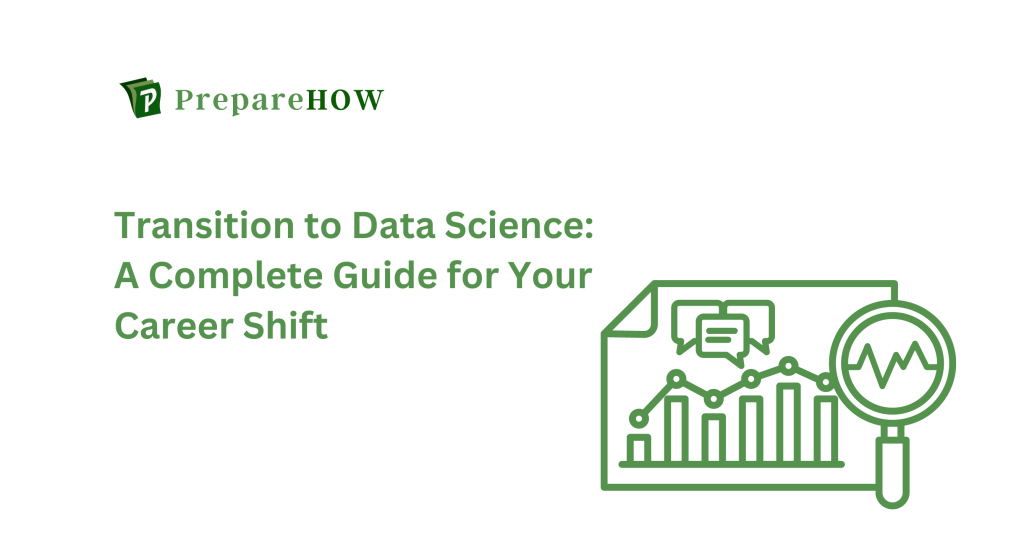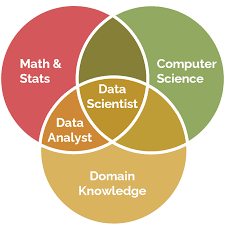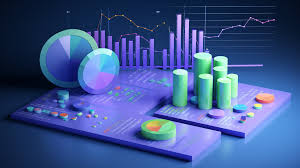
In today’s rapidly evolving job market, transitioning to data science has become an attractive option for many professionals. Whether you’re coming from an engineering background, business analytics, or even a non-technical field, the demand for data science expertise continues to rise. This article is your go-to guide for making a successful transition to a data science career, offering actionable insights, essential skills, and resources to help you get started.
The field of data science offers endless opportunities, and this article is designed to provide a step-by-step approach to your career switch. Read on to discover why transitioning to a data science career is a great choice and how you can leverage your existing skills to break into this highly lucrative and dynamic field.
Why Consider a Career Transition to Data Science?
Making a career switch to data science is a decision more professionals are considering, and for good reason. The demand for data scientists continues to grow as companies look to harness the power of data for better decision-making. Whether it’s in marketing, healthcare, finance, or retail, data science professionals play a crucial role in generating insights from data that drive business success.
This career shift offers not just high salaries but also a wide range of opportunities for professional growth. Data science is a field that constantly evolves, and professionals who master essential tools like Python, SQL, and machine learning are in high demand. If you’re considering a career change that provides job stability and challenges your analytical skills, data science might just be the perfect fit.
Key Skills You Need to Transition into Data Science
When transitioning into data science, having a solid understanding of core skills is essential. Unlike many other fields, data science combines both technical and soft skills to achieve successful outcomes.
1. Technical Skills
The technical foundation for a career in data science includes proficiency in programming languages like Python or R. These are used to manipulate data, build machine learning models, and perform data analysis. You’ll also need knowledge of SQL for querying databases, as well as experience with data wrangling, which involves cleaning and preparing vast amounts of data for analysis. Tools like Pandas, NumPy, and data visualization libraries such as Matplotlib and Seaborn are also essential for working effectively with data.
Another critical area is machine learning—understanding algorithms and how they can be applied in data science is key. Machine learning helps in building predictive models, detecting patterns, and providing recommendations, all of which are highly valuable in a data-driven world.
2. Analytical and Problem-Solving Skills
In addition to technical skills, data science professionals need strong analytical capabilities. Being able to interpret data, identify trends, and draw meaningful conclusions is crucial in making informed decisions. Moreover, having a strong understanding of statistical methods and data visualization techniques will enable you to present data insights in a way that stakeholders can easily understand.
A successful transition into data science also involves problem-solving abilities. Data scientists frequently encounter unstructured data and real-world challenges where they need to devise innovative solutions.
3. Soft Skills
Communication is a critical soft skill for any data scientist. The ability to explain complex data science concepts and insights to non-technical stakeholders is essential. Additionally, collaboration with data engineers, analysts, and business teams will be part of your daily routine.
Having the right blend of technical, analytical, and soft skills will position you well as you transition your career to data science.

Getting Started in Data Science: First Steps
Making a career transition to data science may seem daunting, but it can be broken down into manageable steps. Here’s a roadmap for how to get started:
1. Self-Assessment and Goal Setting
Before diving into a data science career, it’s important to assess your current skill set and identify the areas where you need improvement. Are you comfortable with data manipulation? Do you have experience in programming? Understanding your starting point will help you focus on the skills that are most relevant to your transition.
Set clear goals for your data science journey. Whether your goal is to become a data scientist or focus on data engineering, having a well-defined path will keep you motivated.
2. Learn the Fundamentals
If you’re new to data science, online courses are a great place to begin. Platforms like 365 Data Science offer comprehensive programs that cover everything from data science fundamentals to advanced machine learning techniques. The best part is that these courses are designed for both beginners and professionals looking to enhance their skills. These resources will introduce you to the world of data science and provide hands-on projects that you can add to your portfolio.
3. Work on Real Data Science Projects
One of the most effective ways to transition into data science is by working on real projects. Platforms like Kaggle offer a range of datasets and challenges that allow you to apply your knowledge in real-world scenarios. Building a portfolio with diverse projects, from data visualization to predictive modeling, will demonstrate your capabilities to future employers.
Having a portfolio that showcases your ability to work with data and solve problems is a powerful tool when applying for data science jobs.
The Role of Machine Learning in Your Data Science Career
Machine learning is a core component of data science and a skill that is increasingly sought after by employers. Whether you want to build predictive models, work with recommendation systems, or develop automation tools, machine learning knowledge is essential.
1. Supervised and Unsupervised Learning
Machine learning can be categorized into supervised and unsupervised learning. Supervised learning involves training a model on a labeled dataset, while unsupervised learning deals with unlabeled data, allowing the machine to discover patterns on its own. Understanding the difference between these two types of learning is crucial for applying machine learning algorithms in various data science roles.
2. Deep Learning and AI
Another growing area within data science is deep learning, which involves training large neural networks on massive datasets. This technique is particularly useful in applications like image recognition, natural language processing, and predictive analytics. Mastering deep learning tools like TensorFlow or PyTorch can significantly boost your career in data science.
3. How to Learn Machine Learning
To start learning machine learning, begin with an understanding of basic algorithms like linear regression, decision trees, and support vector machines. As you progress, dive deeper into complex algorithms and frameworks. There are numerous online data science courses, including those offered by 365 Data Science, which cover the full spectrum of machine learning skills.
Data Science Tools You Need to Know
To successfully transition into a data science career, familiarity with essential data science tools is key. Here’s a rundown of the most popular tools you’ll likely encounter:
1. Programming Languages
The most commonly used programming languages in data science are Python and R. Python is particularly popular due to its simplicity and versatility, while R is favored for its statistical capabilities. Learning either of these will provide you with a strong foundation in data manipulation and analysis.
2. Data Visualization Tools
Data visualization is an integral part of data science. Tools like Matplotlib, Seaborn, and Tableau help you create meaningful graphs and charts that communicate insights clearly. Understanding how to use these tools to present data is essential for success in any data science role.
3. Big Data Technologies
For those interested in working with vast amounts of data, big data technologies like Hadoop and Spark are invaluable. These tools allow you to process and analyze large datasets more efficiently and are often used in organizations that deal with complex data challenges.

Career Paths in Data Science
Data science isn’t a one-size-fits-all career. There are multiple career paths you can pursue, depending on your interests and strengths:
1. Data Scientist
As a data scientist, you’ll be responsible for analyzing data and building predictive models to solve business problems. This role often involves working with machine learning algorithms and requires a strong background in both programming and statistics.
2. Data Analyst
A data analyst focuses on analyzing datasets to provide insights that help drive business decisions. While this role requires fewer machine learning skills, it still demands proficiency in data manipulation and data visualization.
3. Data Engineer
Data engineers work behind the scenes to build data pipelines and ensure the smooth flow of data within an organization. This role involves working with big data technologies and requires strong programming skills.
Whether you choose to become a data scientist, data analyst, or data engineer, each role offers unique opportunities within the data science field.
Final Thoughts
Transitioning into data science can open up numerous career opportunities across various industries. With the right combination of technical skills, hands-on experience, and a passion for problem-solving, you can successfully make the switch to this exciting field.
By following these steps and leveraging online resources like 365 Data Science, you can set yourself up for a rewarding career transition to data science.
Read More: Guide to Learning Data Science: A Beginner’s Resource









